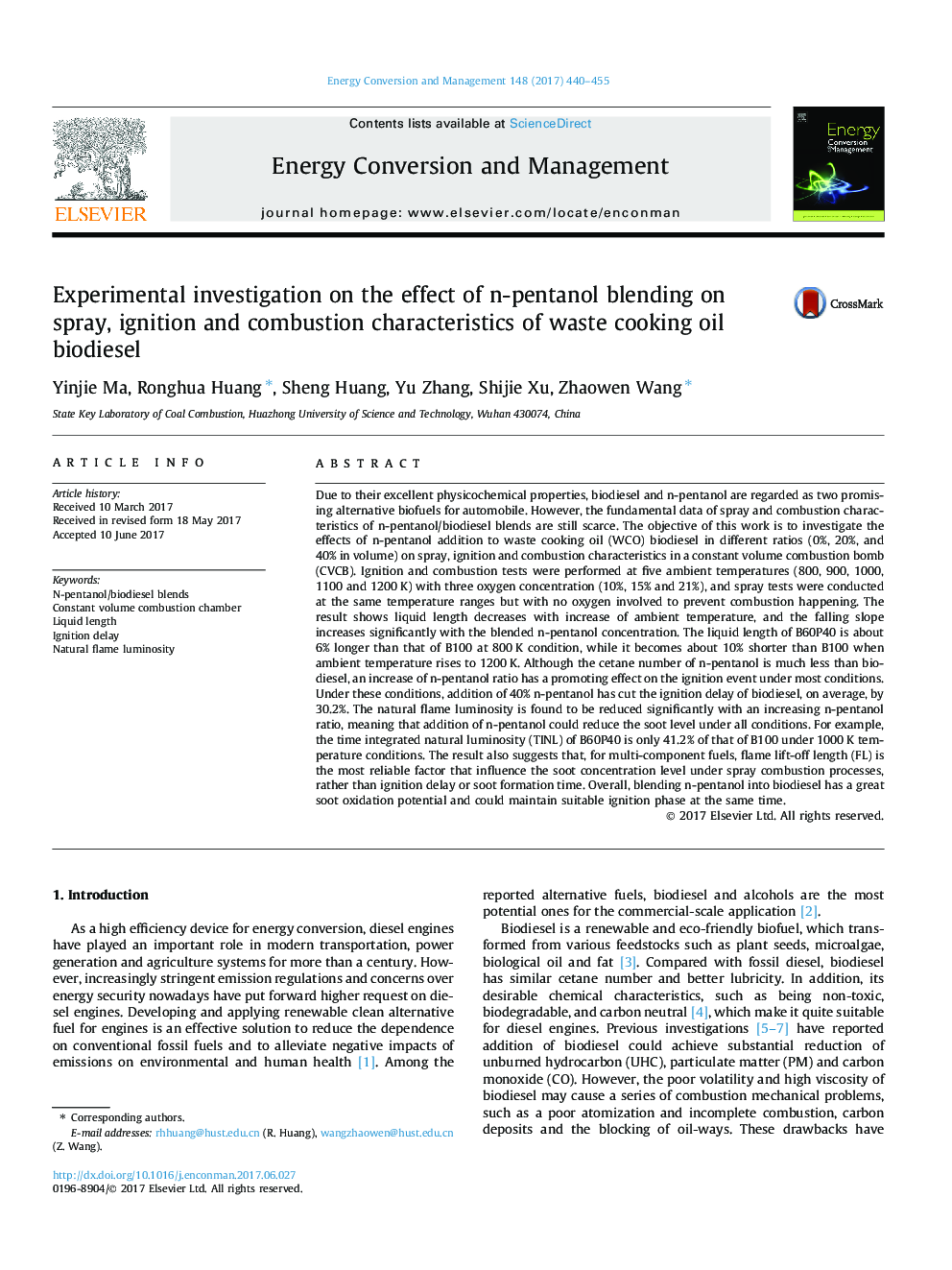| کد مقاله | کد نشریه | سال انتشار | مقاله انگلیسی | نسخه تمام متن |
|---|---|---|---|---|
| 5012609 | 1462814 | 2017 | 16 صفحه PDF | دانلود رایگان |
عنوان انگلیسی مقاله ISI
Experimental investigation on the effect of n-pentanol blending on spray, ignition and combustion characteristics of waste cooking oil biodiesel
ترجمه فارسی عنوان
بررسی تجربی اثر ترکیب نانولوله پنتانول بر ویژگی های اسپری، احتراق و احتراق سوخت های زیستی روغن زیتون
دانلود مقاله + سفارش ترجمه
دانلود مقاله ISI انگلیسی
رایگان برای ایرانیان
کلمات کلیدی
ترکیب نیتروژن پنتانول / بیودیزل، محفظه احتراق حجم ثابت، طول مایع، تاخیر جرقه نور شعله ی طبیعی،
موضوعات مرتبط
مهندسی و علوم پایه
مهندسی انرژی
انرژی (عمومی)
چکیده انگلیسی
Due to their excellent physicochemical properties, biodiesel and n-pentanol are regarded as two promising alternative biofuels for automobile. However, the fundamental data of spray and combustion characteristics of n-pentanol/biodiesel blends are still scarce. The objective of this work is to investigate the effects of n-pentanol addition to waste cooking oil (WCO) biodiesel in different ratios (0%, 20%, and 40% in volume) on spray, ignition and combustion characteristics in a constant volume combustion bomb (CVCB). Ignition and combustion tests were performed at five ambient temperatures (800, 900, 1000, 1100 and 1200Â K) with three oxygen concentration (10%, 15% and 21%), and spray tests were conducted at the same temperature ranges but with no oxygen involved to prevent combustion happening. The result shows liquid length decreases with increase of ambient temperature, and the falling slope increases significantly with the blended n-pentanol concentration. The liquid length of B60P40 is about 6% longer than that of B100 at 800Â K condition, while it becomes about 10% shorter than B100 when ambient temperature rises to 1200Â K. Although the cetane number of n-pentanol is much less than biodiesel, an increase of n-pentanol ratio has a promoting effect on the ignition event under most conditions. Under these conditions, addition of 40% n-pentanol has cut the ignition delay of biodiesel, on average, by 30.2%. The natural flame luminosity is found to be reduced significantly with an increasing n-pentanol ratio, meaning that addition of n-pentanol could reduce the soot level under all conditions. For example, the time integrated natural luminosity (TINL) of B60P40 is only 41.2% of that of B100 under 1000Â K temperature conditions. The result also suggests that, for multi-component fuels, flame lift-off length (FL) is the most reliable factor that influence the soot concentration level under spray combustion processes, rather than ignition delay or soot formation time. Overall, blending n-pentanol into biodiesel has a great soot oxidation potential and could maintain suitable ignition phase at the same time.
ناشر
Database: Elsevier - ScienceDirect (ساینس دایرکت)
Journal: Energy Conversion and Management - Volume 148, 15 September 2017, Pages 440-455
Journal: Energy Conversion and Management - Volume 148, 15 September 2017, Pages 440-455
نویسندگان
Yinjie Ma, Ronghua Huang, Sheng Huang, Yu Zhang, Shijie Xu, Zhaowen Wang,
